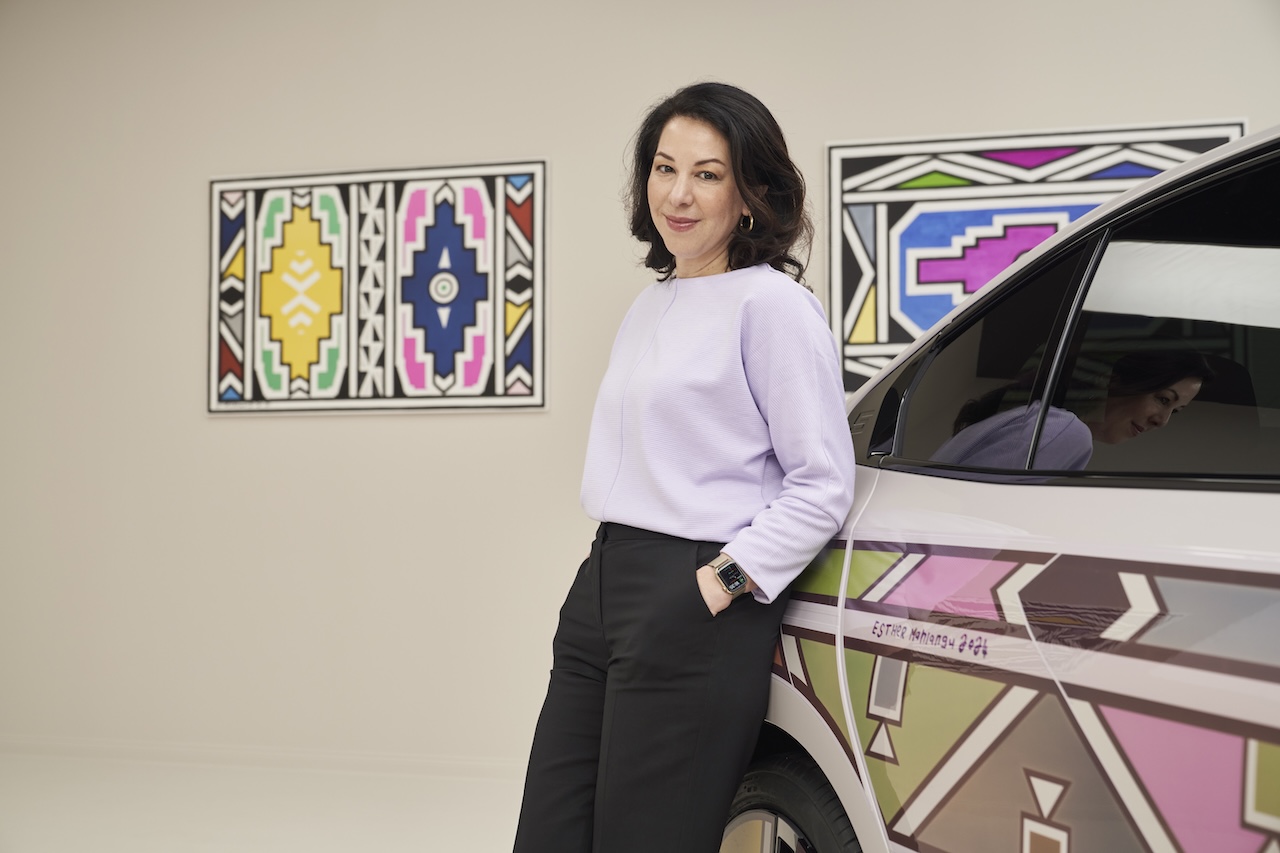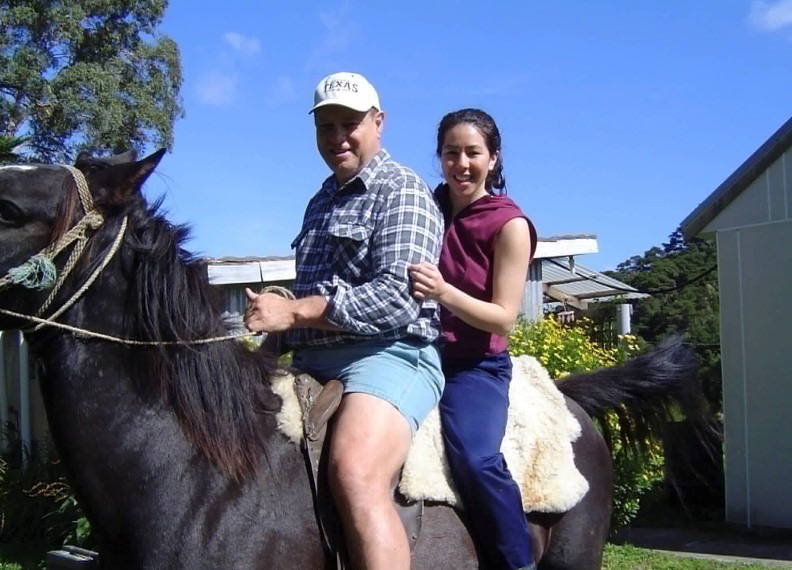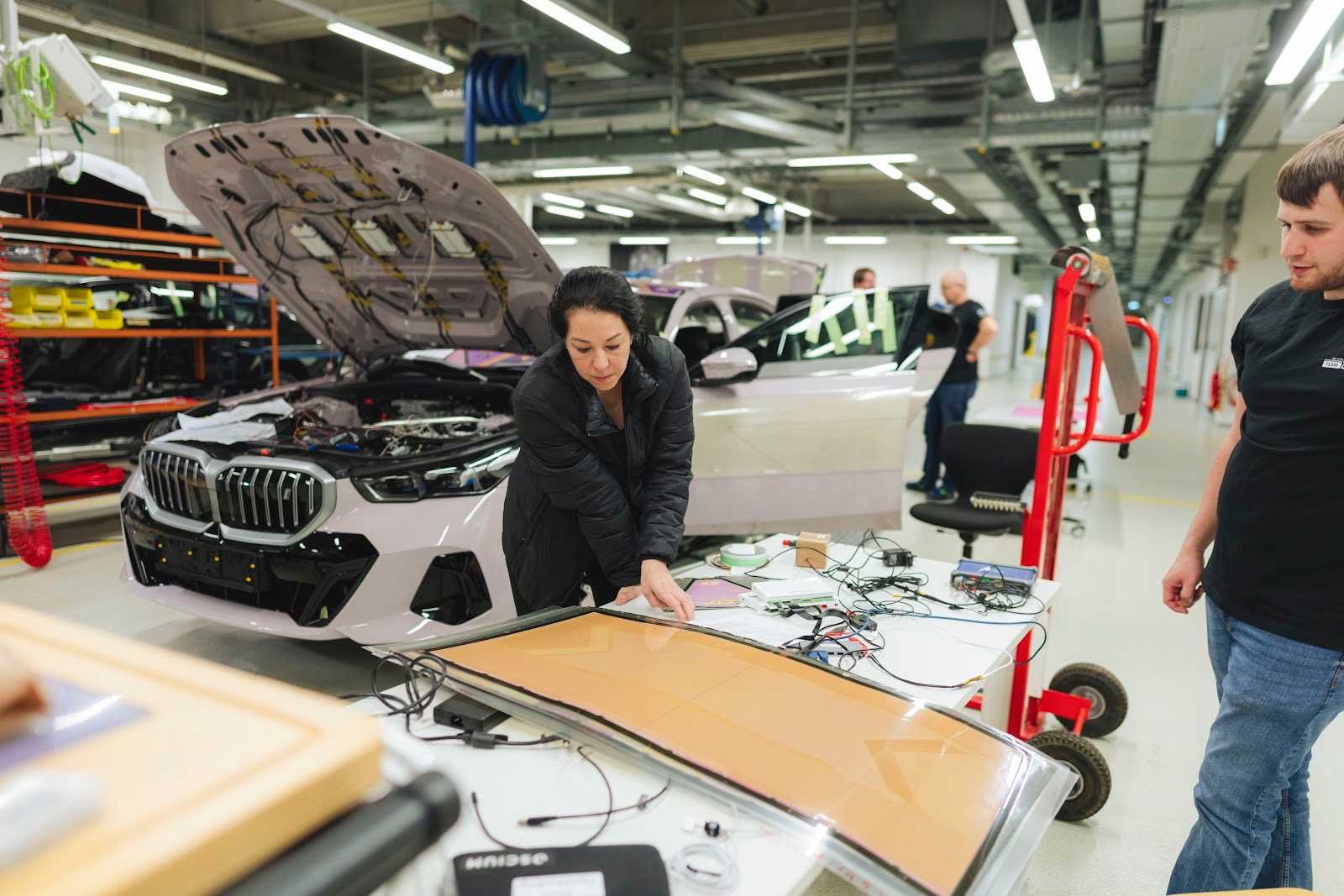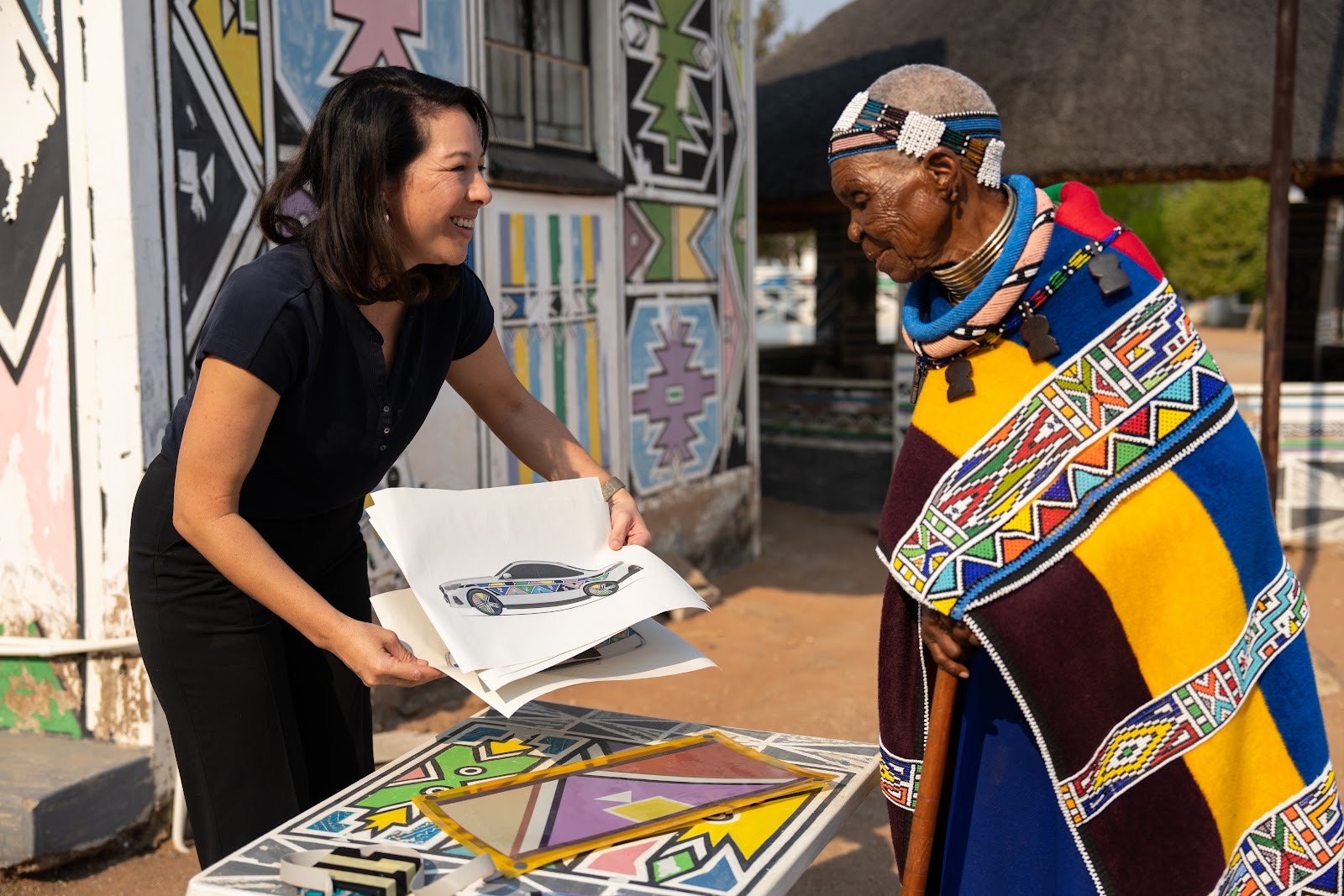Careers
Nāti Map


The Maraehara Valley's dusty gravel roads may seem worlds apart from Germany's high-speed autobahn highways. However for Ngati Porou Engineer, Dr. Stella Clarke, these country roads are just as significant, as they lead her back to Porahu, her whanau papakaenga.
Stella (Ngaitane, Ngati Mahanga, Te Whanau a Hinerupe ki Waiapu, Te Aitanga a Mate, Te Whanau a Rakairoa) works at the international headquarters of the BMW Group in Munich, Germany. She leads a team that has designed color-changing car technology transforming a car's exterior with the tap of an app. Stella took time out of her busy mahi at BMW to talk to Nati Link about her Coastie connections, what other innovative ideas she has and what the whakatauaki E Tipu E Rea' means to her.

My Dad, George Fox Clarke, was the twelfth of thirteen kids, which meant I grew up with over 50 first cousins. Dad grew up in the Porahu, a very remote location up the Maraehara Valley in Rangitukia. Dad said that our Porahu whanau is quite unique. He said that his father, Hoterene Karaka (Clarke), was adopted by Te Iharaira Pokiha (Fox), hence the name Fox. In the 1950s Dad attended Tapere nui a Whatonga school in Rangitukia, and left Aotearoa in 1969 for Australia, where I was brought up.

I'm pushing innovation and heading the "Flow Technologies" team at BMW. I love working on creative and early-phase research topics. I'm a bit of a dreamer. The idea for the colour changing technology came from a love of tech and a fascination with the technology "E Ink," which is found in eReaders like Kindles.
If you took an eReader apart, you'd find multiple layers. One of them is essentially a colour-changing layer. Holding it feels like having an A4 piece of white paper that magically changes to black. You need a bit of electrical energy to change the colour, but absolutely no energy to hold it. It stays black even if you cut the wires supplying the electricity - you can't say that about light! Cut the wires to a lightbulb, and it goes out. But this stays.
It's called "bistability," and for an engineer, it's the closest thing to magic - almost like there's a wairua living in the paper!
With this technology, I thought of so many ways we could make the car and its user interfaces more sustainable, more user-friendly, and more sunlight-readable. Ideas developed, prototypes were made, and eventually, they resulted in the amazing cars we've built over the past three years.

Invention Ideas
I've had many thoughts and ideas over the years, most of which I not only thought about but also built first prototypes of. Most of them involved futuristic user interface designs like touchscreens you can feel, lit-up symbols on a dashboard that completely disappear when your hand leaves them, and buttons that "magically" morph out of a surface. I love the word invention and trying things that are new and have "never been done" before. But the truth is, most of those ideas never made it beyond the initial prototyping stages. Inventing naturally involves a lot of failing and falling first and I did plenty of both!

That sounds like a dream! I would for sure invest time in talking to the young people to school children - and showing them the possibilities the world has to offer. I'd ask the teachers if I could lead a class in science, physics, chemistry, or maths, and I'd put lots of energy into making it fun and interactive with plenty of real-world examples. If a child has a natural interest in science and how the world works, I would help to bring it out! Teaching and encouraging the youth would probably have a bigger impact than any personal project I could do.
E Tipu E Rea
The words of Apirana Ngata are dear to my heart. I wrote them at the very beginning of my PhD dissertation many years ago, and they mean more to me than the 100+ pages that follow it especially the first few lines:
E tipu e rea, mo nga ra o to ao
Ko to ringaringa ki nga rakau a te pakeha, Hei oranga mo to tinana,
Ko to ngakau ki nga taonga a o tipuna, Hei tikitiki mo to mahuna.
Grow up, o tender youth,
Fulfil the needs of your generation,
Your hands master the arts of the Pakeha
For your material well-being.
Your heart cherishes the treasures of your Maori ancestors
As a plume for your head.

The Maraehara Valley's dusty gravel roads may seem worlds apart from Germany's high-speed autobahn highways. However for Ngati Porou Engineer, Dr. Stella Clarke, these country roads are just as significant, as they lead her back to Porahu, her whanau papakaenga.
Stella (Ngaitane, Ngati Mahanga, Te Whanau a Hinerupe ki Waiapu, Te Aitanga a Mate, Te Whanau a Rakairoa) works at the international headquarters of the BMW Group in Munich, Germany. She leads a team that has designed color-changing car technology transforming a car's exterior with the tap of an app. Stella took time out of her busy mahi at BMW to talk to Nati Link about her Coastie connections, what other innovative ideas she has and what the whakatauaki E Tipu E Rea' means to her.

My Dad, George Fox Clarke, was the twelfth of thirteen kids, which meant I grew up with over 50 first cousins. Dad grew up in the Porahu, a very remote location up the Maraehara Valley in Rangitukia. Dad said that our Porahu whanau is quite unique. He said that his father, Hoterene Karaka (Clarke), was adopted by Te Iharaira Pokiha (Fox), hence the name Fox. In the 1950s Dad attended Tapere nui a Whatonga school in Rangitukia, and left Aotearoa in 1969 for Australia, where I was brought up.

I'm pushing innovation and heading the "Flow Technologies" team at BMW. I love working on creative and early-phase research topics. I'm a bit of a dreamer. The idea for the colour changing technology came from a love of tech and a fascination with the technology "E Ink," which is found in eReaders like Kindles.
If you took an eReader apart, you'd find multiple layers. One of them is essentially a colour-changing layer. Holding it feels like having an A4 piece of white paper that magically changes to black. You need a bit of electrical energy to change the colour, but absolutely no energy to hold it. It stays black even if you cut the wires supplying the electricity - you can't say that about light! Cut the wires to a lightbulb, and it goes out. But this stays.
It's called "bistability," and for an engineer, it's the closest thing to magic - almost like there's a wairua living in the paper!
With this technology, I thought of so many ways we could make the car and its user interfaces more sustainable, more user-friendly, and more sunlight-readable. Ideas developed, prototypes were made, and eventually, they resulted in the amazing cars we've built over the past three years.

Invention Ideas
I've had many thoughts and ideas over the years, most of which I not only thought about but also built first prototypes of. Most of them involved futuristic user interface designs like touchscreens you can feel, lit-up symbols on a dashboard that completely disappear when your hand leaves them, and buttons that "magically" morph out of a surface. I love the word invention and trying things that are new and have "never been done" before. But the truth is, most of those ideas never made it beyond the initial prototyping stages. Inventing naturally involves a lot of failing and falling first and I did plenty of both!

That sounds like a dream! I would for sure invest time in talking to the young people to school children - and showing them the possibilities the world has to offer. I'd ask the teachers if I could lead a class in science, physics, chemistry, or maths, and I'd put lots of energy into making it fun and interactive with plenty of real-world examples. If a child has a natural interest in science and how the world works, I would help to bring it out! Teaching and encouraging the youth would probably have a bigger impact than any personal project I could do.
E Tipu E Rea
The words of Apirana Ngata are dear to my heart. I wrote them at the very beginning of my PhD dissertation many years ago, and they mean more to me than the 100+ pages that follow it especially the first few lines:
E tipu e rea, mo nga ra o to ao
Ko to ringaringa ki nga rakau a te pakeha, Hei oranga mo to tinana,
Ko to ngakau ki nga taonga a o tipuna, Hei tikitiki mo to mahuna.
Grow up, o tender youth,
Fulfil the needs of your generation,
Your hands master the arts of the Pakeha
For your material well-being.
Your heart cherishes the treasures of your Maori ancestors
As a plume for your head.

The Maraehara Valley's dusty gravel roads may seem worlds apart from Germany's high-speed autobahn highways. However for Ngati Porou Engineer, Dr. Stella Clarke, these country roads are just as significant, as they lead her back to Porahu, her whanau papakaenga.
Stella (Ngaitane, Ngati Mahanga, Te Whanau a Hinerupe ki Waiapu, Te Aitanga a Mate, Te Whanau a Rakairoa) works at the international headquarters of the BMW Group in Munich, Germany. She leads a team that has designed color-changing car technology transforming a car's exterior with the tap of an app. Stella took time out of her busy mahi at BMW to talk to Nati Link about her Coastie connections, what other innovative ideas she has and what the whakatauaki E Tipu E Rea' means to her.

My Dad, George Fox Clarke, was the twelfth of thirteen kids, which meant I grew up with over 50 first cousins. Dad grew up in the Porahu, a very remote location up the Maraehara Valley in Rangitukia. Dad said that our Porahu whanau is quite unique. He said that his father, Hoterene Karaka (Clarke), was adopted by Te Iharaira Pokiha (Fox), hence the name Fox. In the 1950s Dad attended Tapere nui a Whatonga school in Rangitukia, and left Aotearoa in 1969 for Australia, where I was brought up.

I'm pushing innovation and heading the "Flow Technologies" team at BMW. I love working on creative and early-phase research topics. I'm a bit of a dreamer. The idea for the colour changing technology came from a love of tech and a fascination with the technology "E Ink," which is found in eReaders like Kindles.
If you took an eReader apart, you'd find multiple layers. One of them is essentially a colour-changing layer. Holding it feels like having an A4 piece of white paper that magically changes to black. You need a bit of electrical energy to change the colour, but absolutely no energy to hold it. It stays black even if you cut the wires supplying the electricity - you can't say that about light! Cut the wires to a lightbulb, and it goes out. But this stays.
It's called "bistability," and for an engineer, it's the closest thing to magic - almost like there's a wairua living in the paper!
With this technology, I thought of so many ways we could make the car and its user interfaces more sustainable, more user-friendly, and more sunlight-readable. Ideas developed, prototypes were made, and eventually, they resulted in the amazing cars we've built over the past three years.

Invention Ideas
I've had many thoughts and ideas over the years, most of which I not only thought about but also built first prototypes of. Most of them involved futuristic user interface designs like touchscreens you can feel, lit-up symbols on a dashboard that completely disappear when your hand leaves them, and buttons that "magically" morph out of a surface. I love the word invention and trying things that are new and have "never been done" before. But the truth is, most of those ideas never made it beyond the initial prototyping stages. Inventing naturally involves a lot of failing and falling first and I did plenty of both!

That sounds like a dream! I would for sure invest time in talking to the young people to school children - and showing them the possibilities the world has to offer. I'd ask the teachers if I could lead a class in science, physics, chemistry, or maths, and I'd put lots of energy into making it fun and interactive with plenty of real-world examples. If a child has a natural interest in science and how the world works, I would help to bring it out! Teaching and encouraging the youth would probably have a bigger impact than any personal project I could do.
E Tipu E Rea
The words of Apirana Ngata are dear to my heart. I wrote them at the very beginning of my PhD dissertation many years ago, and they mean more to me than the 100+ pages that follow it especially the first few lines:
E tipu e rea, mo nga ra o to ao
Ko to ringaringa ki nga rakau a te pakeha, Hei oranga mo to tinana,
Ko to ngakau ki nga taonga a o tipuna, Hei tikitiki mo to mahuna.
Grow up, o tender youth,
Fulfil the needs of your generation,
Your hands master the arts of the Pakeha
For your material well-being.
Your heart cherishes the treasures of your Maori ancestors
As a plume for your head.